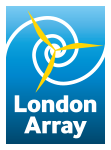
The original consent for London Array was for a wind farm of up to 1,000MW, with 630MW in Phase One and a further 370MW in Phase Two. Phase One is the wind farm we have today
From the start, Phase Two was conditional upon a Grampian condition regarding the impact on a particular species of bird that overwinters within the wind farm’s boundaries.
This required London Array to demonstrate any change caused by additional turbines to the habitat of the Red Throated Divers would not compromise that part of the Thames Estuary’s status as a designated environmental Special Protection Area.
Although Phase Two had the potential to provide capacity for a further 370MW, known constraints resulted in plans for just 240MW being drawn up with an expectation that the final capacity would be closer to 200MW. However, even at this scaled-down level, an assessment in early 2014 indicated it would take until at least 2017 for sufficient bird monitoring data to be collected – with no guarantee London Array would be able to satisfy the authorities with regard to the Red Throated Diver population.
Combined with known technical challenges surrounding the Phase Two site – such as shallow water, longer cable routes and an exclusion zone for aggregates operations – these environmental uncertainties led London Array’s shareholders to withdraw from Phase Two and concentrate on other projects in their individual portfolios.
In February 2014 London Array announced it had formally requested The Crown Estate to terminate the agreement of lease for the Phase Two area and had cancelled the remaining grid capacity reserved at the National Grid substation at Cleve Hill in north Kent.
